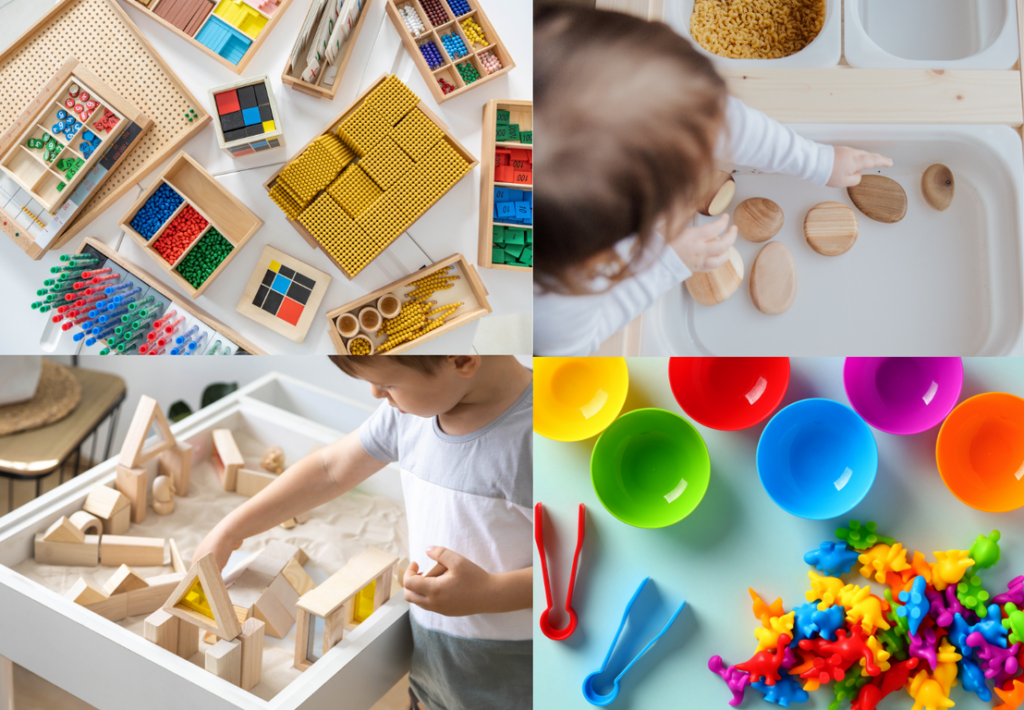The Montessori approach stands out in the world of early childhood educationas, a holistic approach that nurtures a child’s natural curiosity, creativity, and independence. Developed by Dr. Maria Montessori, this educational philosophy is grounded in the belief that children learn best when they’re actively engaged in hands-on, self-directed activities. In this article, we’ll explore what Montessori is, importance of following this method for Early Childhood Education, how it aids children’s development, the materials involved, its integration into the pre-primary curriculum, and how parents can incorporate its principles at home.
Table of Contents show
What is Montessori?
The Montessori method for Early Childhood Education is an educational philosophy that emphasizes a child-centred approach to learning. In a Montessori classroom, children are given the freedom to explore, make choices, and learn at their own pace. The environment is carefully prepared with age-appropriate materials, fostering independence and a love for learning.

Why is the Montessori Important for Early Childhood Education?
- Individualized Learning: It recognizes and accommodates each child’s unique learning style, pace, and interests.
- Developing Independence: In this approach children are encouraged to take responsibility for their learning, fostering a sense of independence and self-discipline.
- Love for Learning: The hands-on, experiential approach instils a love for learning that extends beyond the classroom.
How Montessori Aids Children’s Development?
- Cognitive Skills: Montessori materials, designed to be self-correcting, help children develop critical thinking and problem-solving skills.
- Motor Skills: Through activities like pouring, threading, and using tools, fine and gross motor skills are honed.
- Social Skills: Working in a mixed-age environment promotes cooperation, empathy, and communication skills.
- Sensorial Exploration: Materials designed to stimulate the senses enhance a child’s understanding of the world around them.
Parents Can Use Montessori at Home
- Create Montessori-Inspired Spaces: Arrange rooms to encourage independence, with accessible materials for your child’s age.
- Involve Your Child in Everyday Tasks: Encourage them to help with cooking, cleaning, and organizing to develop practical life skills.
- Provide Hands-On Learning: Use Montessori materials and activities for at-home learning experiences.


One of the beautiful aspects of this method is its emphasis on simplicity and the use of everyday items that can be found at home. Here are some materials commonly used in Montessori education that you may already have or can easily acquire for home learning.
Materials Needed for Montessori
- Practical Life:
- Small Pitcher and Basin: For pouring activities.
- Child-Sized Utensils: Forks, spoons, and knives for developing fine motor skills.
- Cloth Napkins and Placemats: Encourage setting the table independently.
- Sensorial Exploration:
- Sorting Trays: For sorting activities using various objects at home.
- Different Textured Fabrics: Explore the sense of touch.
- Smelling Jars: Small containers with scents like vanilla, lemon, or cinnamon.
- Language Development:
- Books: A variety of picture books and early reader books.
- Alphabet Cards: Homemade or printable cards for letter recognition.
- Labeling Objects: Label everyday items around the house with their names.
- Mathematics:
- Counters: Use household items like buttons, pasta, or coins for counting.
- Measuring Cups: Introduce concepts of volume and measurement.
- Number Cards: Create cards with numerals for matching and counting.
- Art and Creativity:
- Drawing and Craft Supplies: Paper, crayons, scissors, glue, and other art materials.
- Natural Materials: Leaves, twigs, or flowers for nature-inspired art.
- Craft Beads: For threading activities to develop fine motor skills.
- Science and Nature:
- Magnifying Glass: Explore nature up close.
- Seeds and Plants: Learn about the growth cycle by planting seeds.
- Rocks and Shells: Study different textures and shapes.
- Geography and Culture:
- World Map or Globe: Introduce geography concepts.
- Cultural Artifacts: Explore items from different cultures if available.
- Flags: Learn about flags from around the world.
- Music and Movement:
- Simple Instruments: Tambourine, maracas, or a small xylophone.
- Dance Scarves: Encourage movement and rhythm exploration.
- Nature Sounds: Use recordings or go outside to listen to natural sounds.
Remember that the key is not to overwhelm the child with too many materials. Rotate items to keep things fresh and interesting. The Montessori approach values the child’s freedom to choose activities, so make sure the materials are accessible and invite exploration and independent learning.


